
Continuous Integration and Continuous Deployment (CI/CD) for Full Stack Applications
Mar 03, 2025 4 Min Read 5957 Views
(Last Updated)
Continuous Integration and Continuous Deployment (CI/CD) play an important role in making an application run smoothly and meeting the demands of the modern development cycle. It is a very important part and practice DevOps engineers follow. It’s a methodology that enhances collaboration, ensures code quality, and accelerates the delivery of software products.
In this blog, we’ll be delving into the concept of Continuous Integration and Continuous Deployment (CI/CD) for Full Stack Applications. We’ll also talk about its implementation part and the best practices you must follow so that the application runs smoothly and without any bugs or issues. Let’s begin this journey and try to understand as much as possible.
Table of contents
- What is Continuous Integration and Continuous Deployment (CI/CD)?
- What is CI (Continuous Integration)?
- What is CD (Continuous Deployment)?
- Implementation of CI/CD in Full Stack Applications
- Stage 1: Version Control System Integration
- Stage 2: Automated Testing
- Stage 3: Containerization and Orchestration
- Stage 4: Deployment and Continuous Monitoring
- Best Practices for CI/CD in Full Stack Applications
- Wrap Up
- FAQs
- What are the key benefits of implementing CI/CD?
- Which tool is used for continuous deployment in full stack development?
- Why is continuous integration important in FSD application development?
- Is CI/CD suitable for all types of applications?
What is Continuous Integration and Continuous Deployment (CI/CD)?
According to a study by GitLab, 61% of the users believe that CI/CD helps developers deliver applications faster and smoother. Talking about Continuous Integration and Continuous Deployment (CI/CD), it’s the most important DevOps skill which is the process of integrating code changes, made by developers, and deploying them to the production environments continuously.
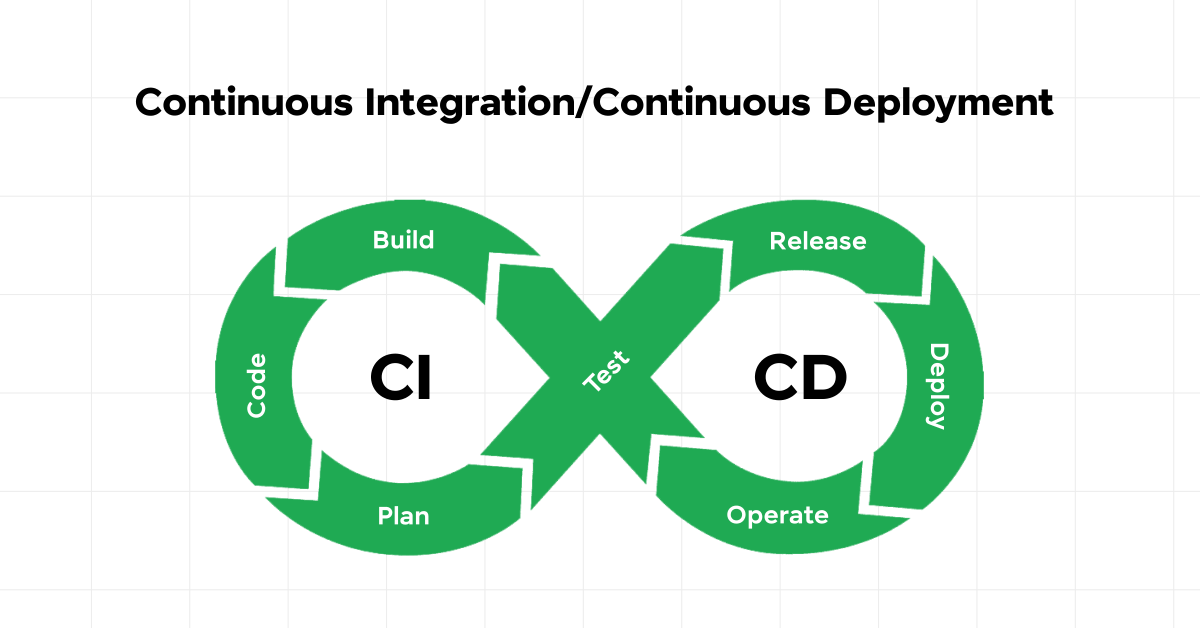
We all have heard about the software development lifecycle (SDLC), which consists of 8 stages including:
- Plan
- Code
- Build
- Test
- Release
- Deploy
- Operate
- Monitor
Out of which, the build and test stages function as Continuous Integration, and the release and deploy stages function as Continuous Deployment. With this methodology, developers focus on adding new features to the application, while at the same time, the automation process takes care of the building, testing, and deploying of the application.
Must Read | Continuous Integration vs Continuous Deployment in DevOps (A Comprehensive Guide)
Before you understand CI/CD, you must have a better understanding of the complete DevOps roadmap to know the essentials required beforehand.
Now, let’s break CI/CD down into two steps and understand it in more depth:
What is CI (Continuous Integration)?
Continuous Integration is a software development practice wherein developers frequently integrate their code changes into a shared repository. Each integration triggers automated builds and tests, enabling early detection of integration errors and ensuring that the codebase remains consistently functional.
The primary goal of CI is to catch integration errors quickly and maintain a high-quality codebase. It helps in identifying and fixing issues early in the development process, reducing the chances of conflicts and integration problems later on.
Also Read: What to learn to become a DevOps engineer?
What is CD (Continuous Deployment)?
Continuous Deployment extends the principles of CI by automating the deployment process. It involves automatically deploying every successful build to production or staging environments, thereby reducing the time and effort required to release software updates.
Continuous Deployment aims to deliver new features, bug fixes, and enhancements to end-users as soon as they are ready, ensuring a rapid and efficient delivery process.
Also Read: Career Opportunities for DevOps Engineers
Now that you know a bit in-depth about CI/CD, Let’s look at the implementation of CI/CD in Full Stack Applications.
Implementation of CI/CD in Full Stack Applications
Before this, you need to also understand the role of DevOps in full stack development. The implementation of CI/CD in full stack applications occurs in different stages, let’s look at each stage thoroughly:
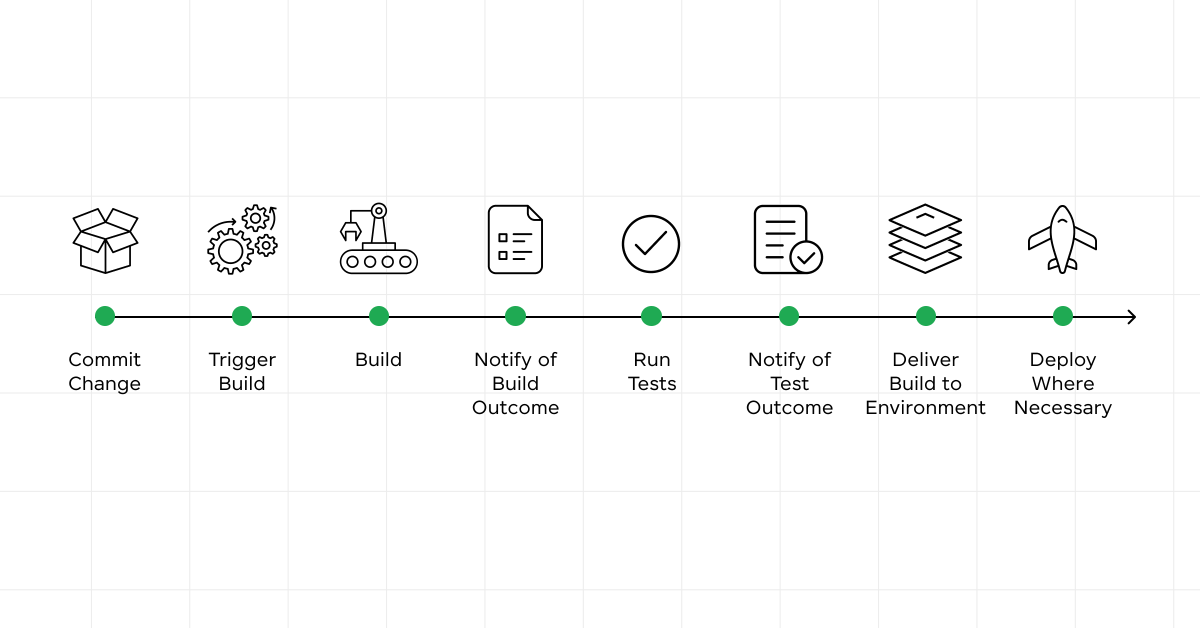
Stage 1: Version Control System Integration
Initiate the CI/CD journey by utilizing a robust version control system like Git. Git enables developers to track changes, collaborate efficiently, and maintain a comprehensive history of the codebase. Hosting platforms such as GitHub, GitLab, or Bitbucket provide collaborative environments, facilitating seamless cooperation among team members.
Utilize tools like Git to manage code versions and enable seamless collaboration among team members.
Stage 2: Automated Testing
Automated testing in the context of a CI/CD pipeline for a full stack application is crucial for maintaining code quality, ensuring reliability, and facilitating rapid deployment. A full stack application, which typically includes a front-end, back-end, and possibly a database and other services, demands a robust testing strategy that covers various aspects of the system.
Employ build automation tools like Jenkins, Travis CI, or CircleCI to automate the compilation, packaging, and distribution of application artifacts. Implement unit tests, integration tests, and end-to-end tests to validate code changes automatically.
Stage 3: Containerization and Orchestration
Utilize containerization technologies such as Docker to create lightweight, portable environments for deploying applications consistently across different environments. Utilize orchestration tools like Kubernetes to manage and scale containerized applications effectively.
Stage 4: Deployment and Continuous Monitoring
Utilize deployment automation tools such as Ansible, Puppet, or Chef to automate the provisioning and configuration of infrastructure resources. Implement monitoring tools to track the performance, availability, and reliability of deployed applications in real time.
You must also work on some of the best DevOps project ideas to understand how things function at the backend.
Best Practices for CI/CD in Full Stack Applications
You must also know some of the basic DevOps Practices, and then move into CI/CD. Let’s read some of the best practices developers must follow for CI/CD in Full Stack Applications:
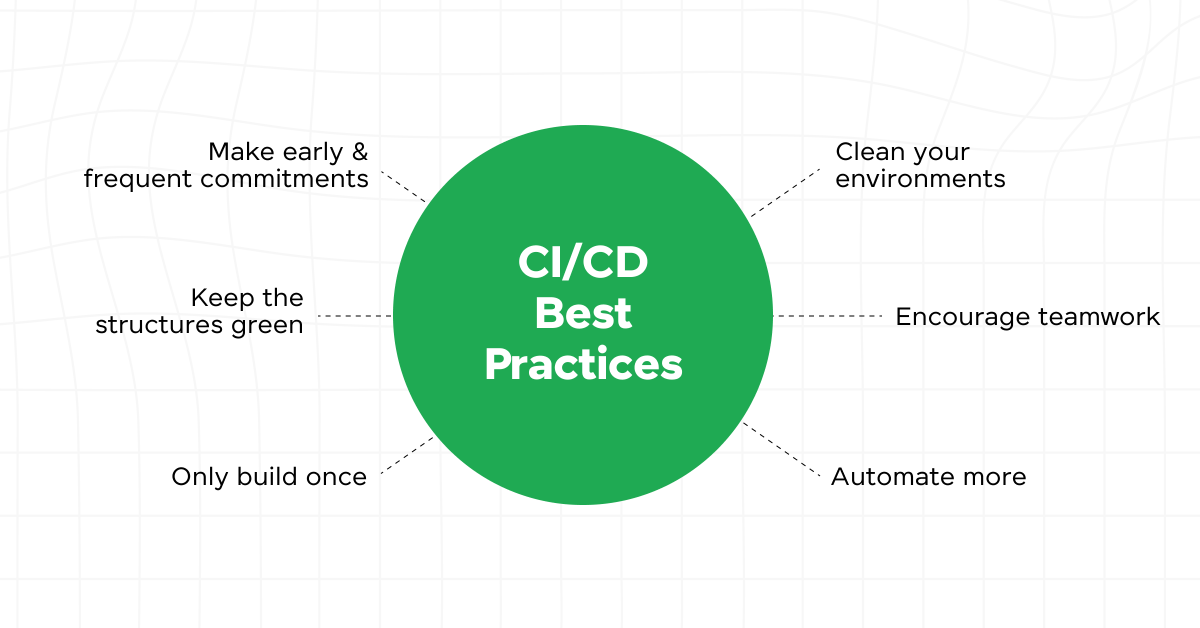
- Having a Clean Codebase: You must ensure that the codebase is clean, follow coding standards, and conduct regular code reviews. This helps them to have a clear check in case of any changes in the future.
- Automated Testing: Create comprehensive test suites for both front-end and back-end components to catch issues early. Not just the testing part, you can automate development, testing, and deployment processes.
- Version Control: Use a robust version control system like Git to track code changes and facilitate collaboration. This can be done to ensure traceability and rollback capabilities.
- Security Scanning: Integrate security scanning tools into your CI/CD pipeline to detect vulnerabilities and address them before deployment.
- Continuous Monitoring: This is a very important practice where you have to continuously monitor the application’s performance using various tools to identify and address issues properly.
Must Explore: DevOps Engineer Roles, Responsibilities, and Job Description
Kickstart your career by enrolling in GUVI’s DevOps Course where you will master technologies including Linux, Git, AWS, etc, and build interesting real-life DevOps projects.
Alternatively, if you want to explore AWS infrastructure through a Self-paced course, try GUVI’s AWS Infrastructure certification course.
Wrap Up
Continuous Integration and Continuous Deployment have played a very important role in building full stack applications. Now that you know the stages to follow for Continuous Integration and Continuous Deployment (CI/CD) for Full Stack Applications, and its best practices. You can build web applications with efficiency. This can streamline their development workflows, accelerate time-to-market, and deliver high-quality software products with confidence.
Also Read: Top High-Paying Non-Coding Jobs in DevOps
FAQs
Some of the key benefits of implementing CI/CD:
1) CI/CD enables faster delivery of features and updates.
2) It ensures higher code quality through automated testing and validation.
3) CI/CD promotes collaboration among development teams and reduces the risk of integration issues.
GitLab is a popular CI/CD tool that offers features like continuous integration, delivery, and deployment all within a single interface that integrates with the Git source control system. It enables you to implement planning, source code management, tracking, and security into your development life cycle.
Continuous Integration enables better transparency and farsightedness in the process of software development and delivery. It not only benefits the developers but all the segments of that company. These benefits make sure that the organization can make better plans and execute them following the market strategy
Yes, CI/CD can be implemented for a wide range of applications, including web applications, mobile apps, microservices, and more. However, the specific implementation may vary based on the nature of the application and its deployment requirements.

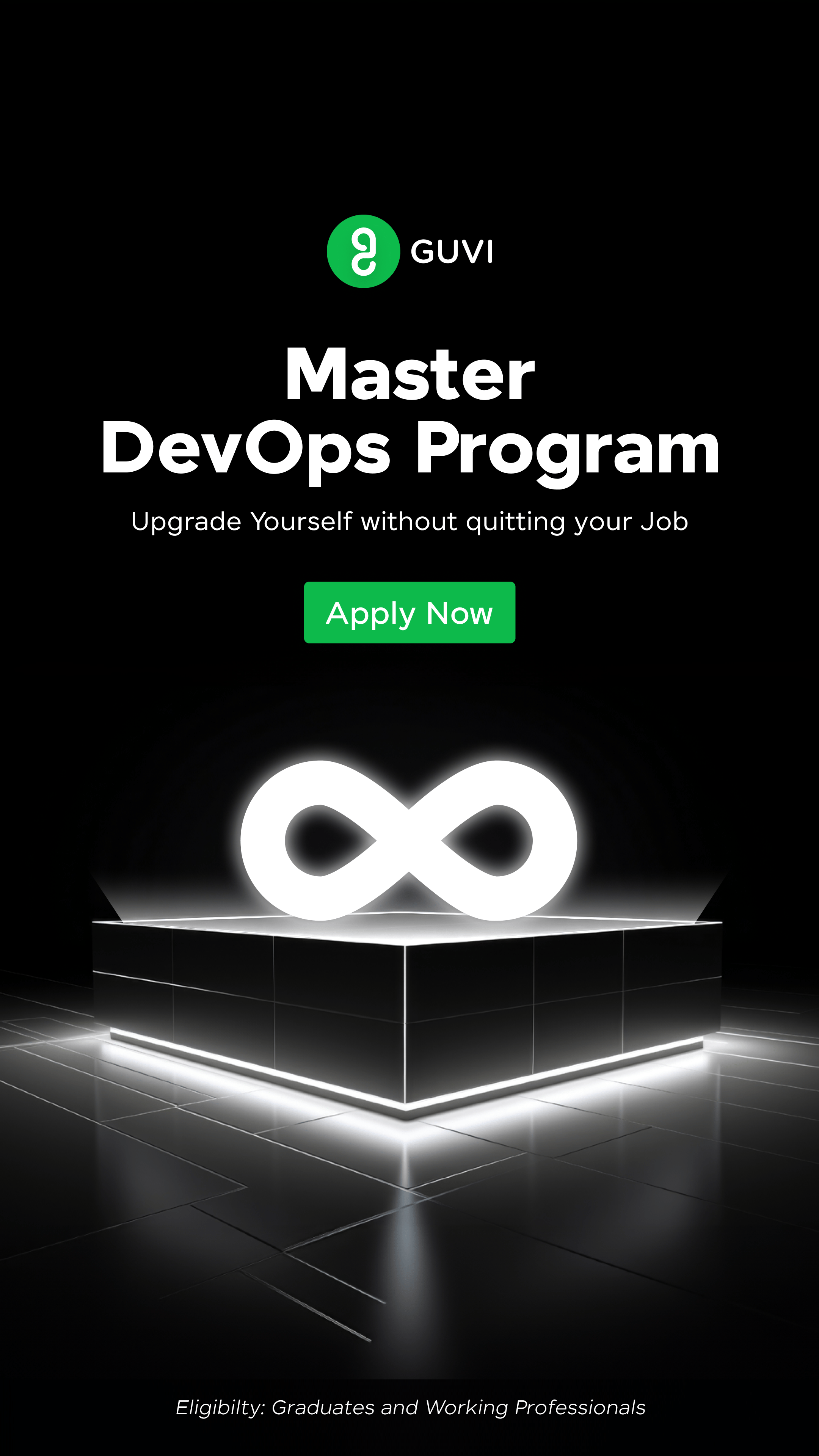


















![Top High-Paying Non-Coding Jobs in DevOps [2025] 6 Non-Coding Jobs in DevOps](https://www.guvi.in/blog/wp-content/uploads/2023/11/Top-10-Non-Coding-Jobs-in-DevOps.png)
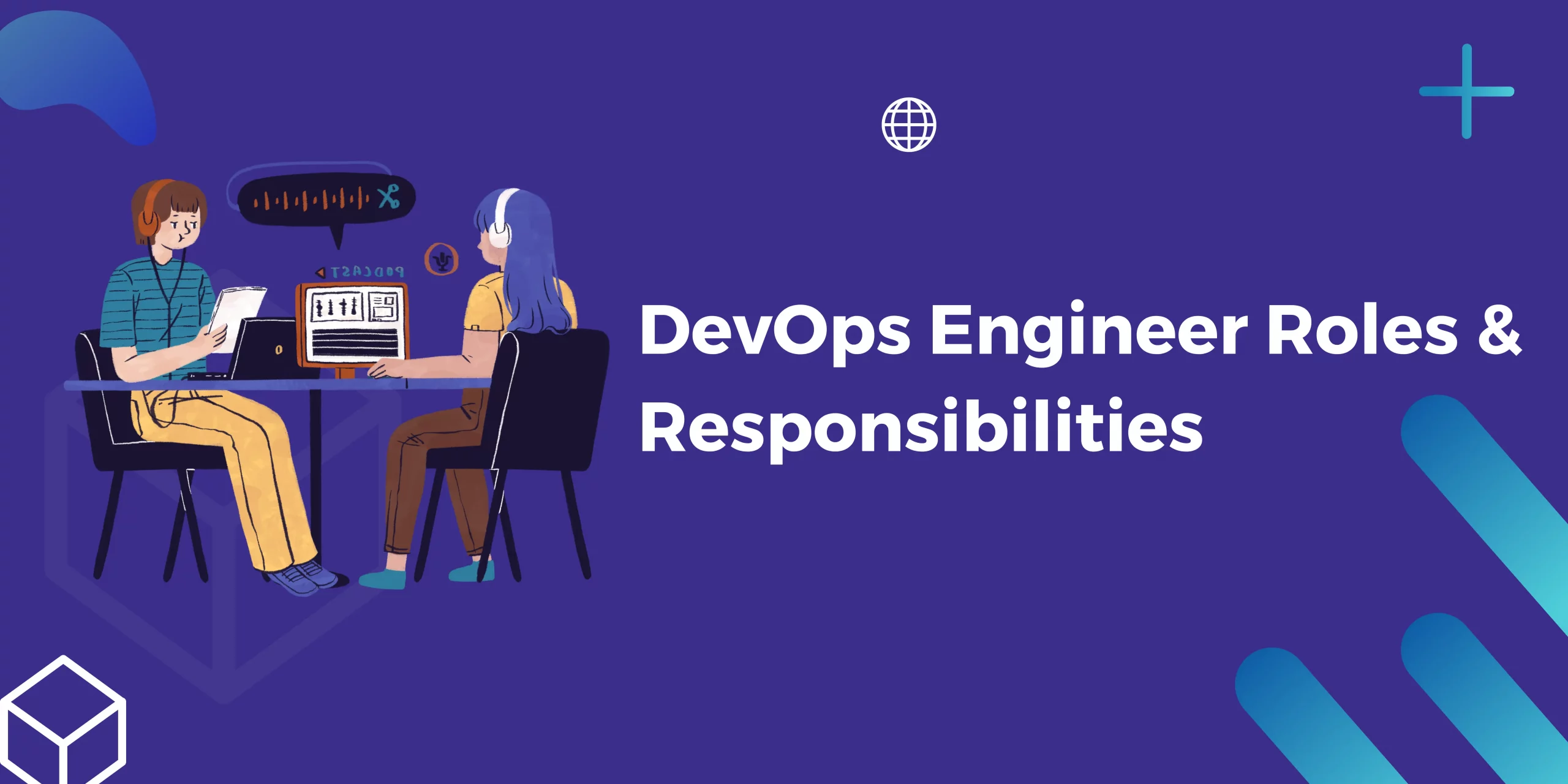
![Top 15+ Jenkins Interview Questions and Answers [2025] 8 jenkins interview questions](https://www.guvi.in/blog/wp-content/uploads/2022/06/wallpapertip_open-source-wallpaper_1780230.jpg)
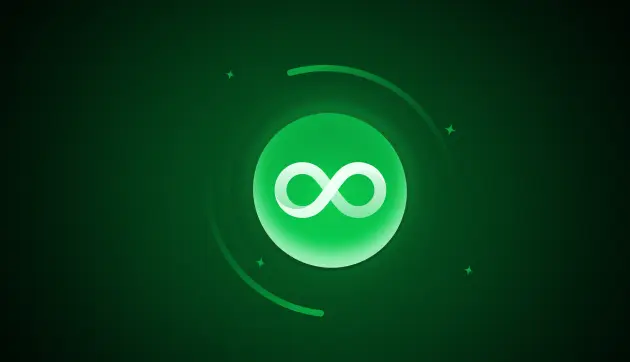


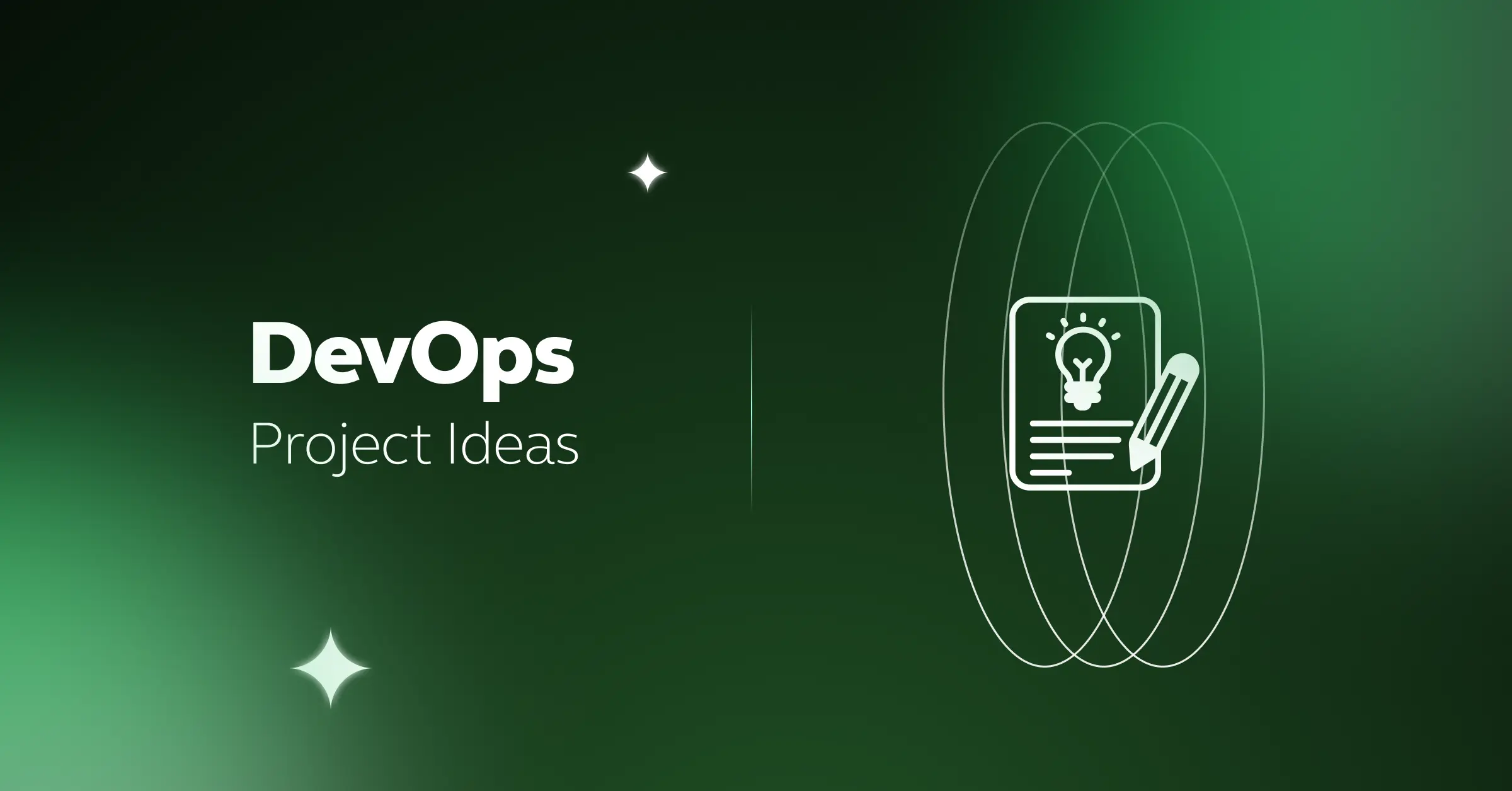
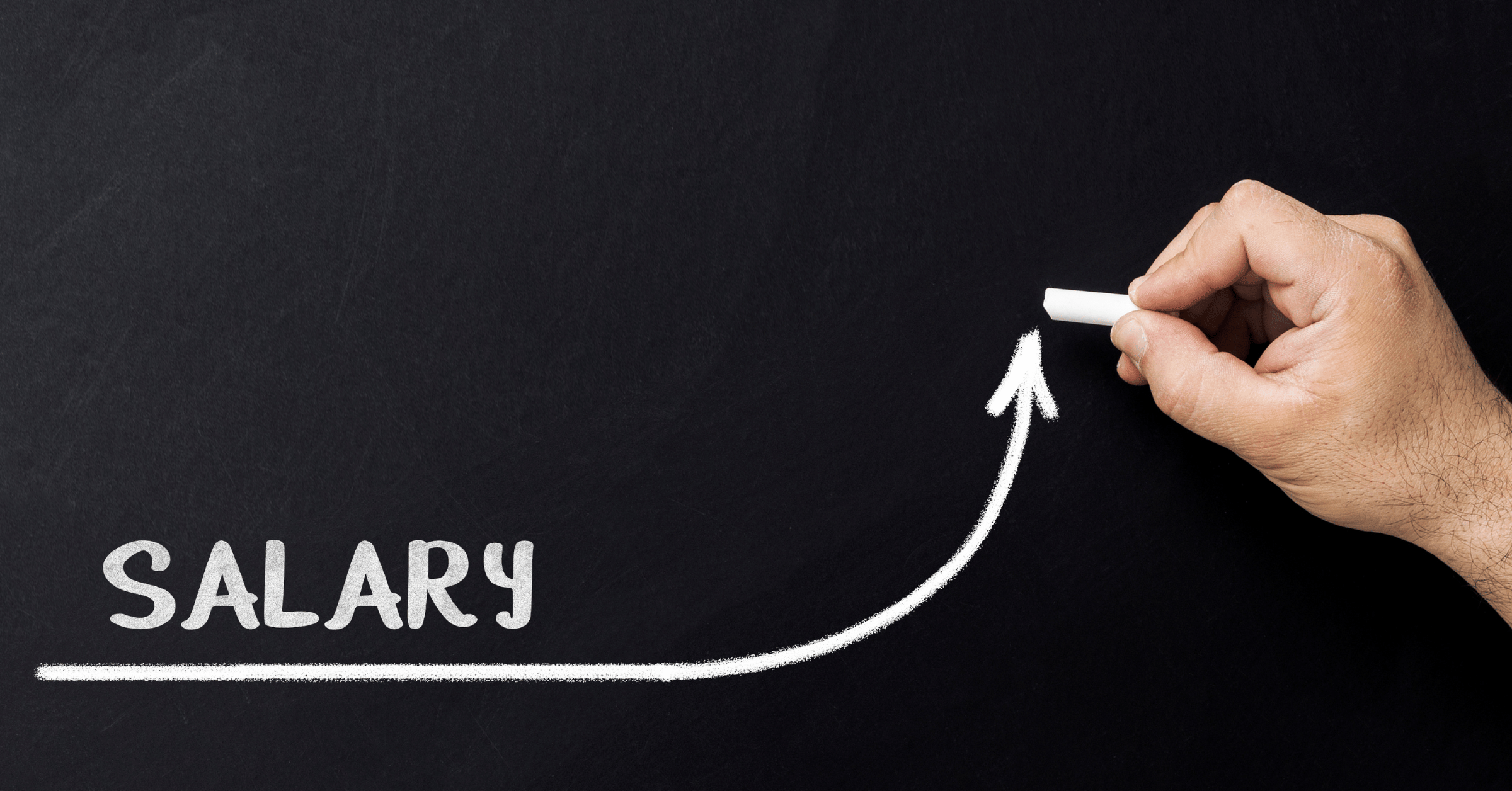

Did you enjoy this article?